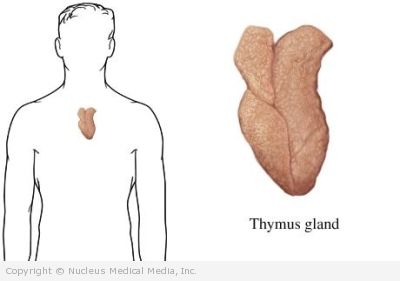Myasthenia Gravis – Definition
Myasthenia gravis (MG) is an autoimmune disorder. The signal from the nerves to the muscles is blocked. As a result, the muscle cannot move and become increasingly weaker.
Symptoms may grow more severe over time. This is a potentially serious condition. MG requires care from your doctor. If you suspect you have this condition, contact your doctor immediately.
Myasthenia Gravis – Causes
The root cause of MG is unknown. It occurs when the body’s immune system attacks receptors in muscle. Normally, these receptors respond to the chemical acetylcholine (ACh). This chemical allows nerve signals to prompt the muscles to move. When the immune system prevents these receptors from working well, the muscles cannot respond to nerve signals.
The thymus is thought to play a role in some cases of MG. The thymus is an organ behind the breastbone. Immune proteins called antibodies are produced there. It is these antibodies that may target the ACh receptors. It is still not clear why the thymus begins to produce these.
Infants of mothers with MG are more likely to develop a temporary form. It is called neonatal MG. The mother’s abnormal antibodies enter the baby’s bloodstream. When the baby is born, there may be muscle weakness. The abnormal antibodies are often cleared from the baby in about two months. This will end the baby’s symptoms.
Myasthenia Gravis – Risk Factors
The following factors increase your chance of developing MG:
- Sex and age:
- Women between the ages of 10—30
- Men between the ages of 50—60
- People with certain genetic markers, called HLA-B8, DR3
Myasthenia Gravis – Symptoms
Symptoms include:
- Muscle weakness that increases with muscle use/exercise, and improves after resting those muscles
- Weakness of muscles that control:
- The eyelids
- Eye movement
- Facial expression
- Chewing
- Swallowing
- Coughing
- Breathing
- Arm and leg movement
- Drooping eyelids
- Double and/or blurred vision
- Difficulty swallowing
- Difficulty speaking
- Difficulty walking
- Weakness of the hand muscles
- Myasthenic crisis — a severe flare of symptoms, breathing may be significantly impaired
Myasthenia Gravis – Diagnosis
Your doctor will ask about your symptoms and medical history. A physical exam will be done. You may need to see a neurologist. This type of doctor is an expert in diseases of the nervous system.
Tests may include the following:
- Blood tests — to identify the presence of abnormal antibodies and to look for thyroid disease (more common in patients with MG)
- Electromyography (EMG) tests — to reveal abnormalities in muscle functioning
- Repetitive nerve stimulation — may show progressively increasing muscle weakness over the course of the test
- Tensilon test — a dose of a medication called edrophonium chloride is given, which will briefly improve muscle weakness
- Computed tomography (CT) or magnetic resonance imaging (MRI) scan of the chest — to look for a tumor of the thymus gland (thymoma)
- Pulmonary function testing — to assess how MG may be affecting your ability to breathe
Myasthenia Gravis – Treatment
Talk with your doctor about the best plan for you. Treatment options include:
Acetylcholinesterase Inhibitors
These drugs interfere with the breakdown of ACh. This increases the amount of ACh available to stimulate the muscle. These medications include:
- Pyridostigmine
- Neostigmine
Immunosuppressive Therapy
This therapy is given to suppress the immune system. As a result, there are fewer antibodies present to attack the receptors. These medications include:
- Prednisone
- Azathioprine
- Mycophenolate mofetil
- Cyclosporine
- Cyclophosphamide
- Tacrolimus
Immunoglobulin Therapy
Immunoglobulin given by IV might help reduce symptoms. The exact mechanism is unclear. This treatment seems to have fewer side effects that plasmapheresis.
Plasmapheresis
This is a procedure which cleans the blood of the abnormal antibodies. This process may need to be repeated at certain intervals.
Thymectomy
Removal of the thymus gland is recommended for most patients with MG. This surgery may improve the symptoms in some patients.
Mechanical Ventilation
This may only be needed if breathing is severely impaired. This can happen during an episode of myasthenic crisis.
Physical and Occupational Therapy
Therapy does not generally alter the course of the disease. It may be needed to help the patient cope with changes in muscle strength. It may also help with learning alternative ways to approach daily activities.
Myasthenia Gravis – Prevention
There are no known ways to prevent MG. The following steps may improve muscle functioning in people who already have the condition:
- Avoid medicines that may worsen MG, such as:
- Beta-blockers
- Aminoglycoside antibiotics
- Quinolone antibiotics
- Class I medications used for abnormal heart rhythms
- Treat any infections promptly.
- If you have trouble swallowing, please notify your doctor immediately. You may wish to consult a dietitian to help you construct a healthy diet that is easier to swallow.
- If you have trouble speaking, you may wish to consult a speech therapist.

